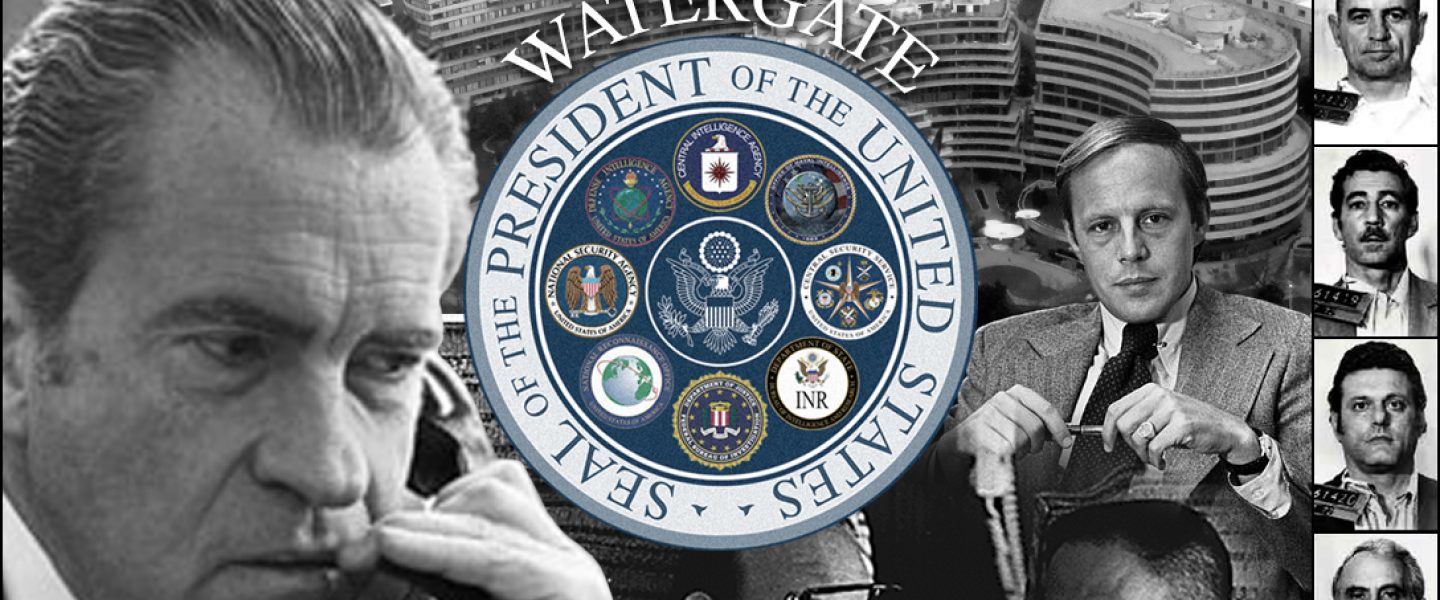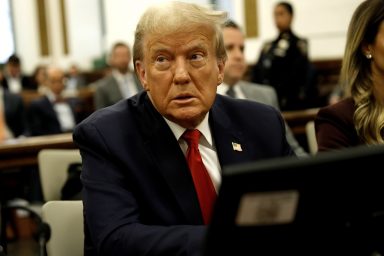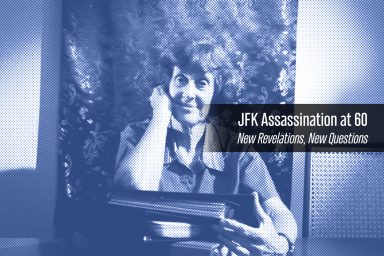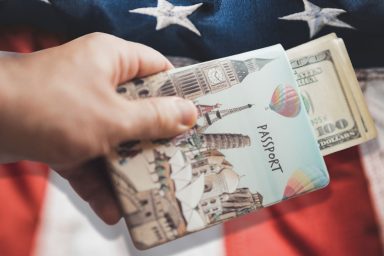Watergate and the Downing of Nixon, Part 1
Excerpt From Family of Secrets
Is there a "Deep State"? And did it do Nixon in? A timely look at a precursor event for Trump Times. Part 1 of a series.
With President Donald Trump and his administration facing investigation by a special counsel, we increasingly see parallels being drawn with Watergate, and the investigation and removal of Richard Nixon. Perhaps that is why I am hearing a lot of interest in the discoveries I made in the course of research for my book Family of Secrets.
What I found — what totally blew me away — was that almost everything I thought I knew about Watergate… was wrong.
And I found it in the most improbable way: studying another president, or presidential clan, the Bushes. I found evidence of involvement by the Bushes in a host of covert activities that have been little explored and little understood over the years. I found evidence that George H.W. Bush (“Bush 41”) had been secretly involved in work for the Central Intelligence Agency for decades before he was named the outfit’s director.
Bush was part of the Nixon Administration, but I discovered what appeared to be evidence he had been involved in a plot to remove the president.
This brings to mind claims that “deep state” elements are seeking to undo Donald Trump. Given Trump’s own track record, it’s hard to see how it would require the machinations of enemies to seal his doom. Nonetheless, the question of how elements of the dominant establishment — including allies in intelligence agencies, the military, and high finance, might move against a president it viewed as threatening to “US interests” (or their own) — is an intriguing one.
Irrespective of what fate one prefers for Trump, the real story behind the fate of another American president — whose tale of an iconic Shakespearean downfall turns out to be shaky at its core — is fascinating.
In Part 1 of this multipart series, Richard Nixon and his top aides learn of and react with disbelief to the seemingly ill-advised and bungled burglary of the Democratic National Committee offices. For Part 2, please go here.
Excerpted from Family of Secrets: The Bush Dynasty, America’s Invisible Government and the Hidden History of the Last Fifty Years.
Notes: (1) Although these excerpts do not contain footnotes, the book itself is heavily footnoted and exhaustively sourced. (2) To distinguish between George Bush, father and son, George H.W. Bush is sometimes referred to by his nickname Poppy, and George W. Bush by his, W. (3) Additional context can be found in the preceding chapters.
Downing Nixon, Part I: The Setup
.
Who Will Rid Me of This Troublesome Priest?
—ascribed to Henry II
On June 17, 1972, a group of burglars, carrying electronic surveillance equipment, was arrested inside the Democratic National Committee offices at 2650 Virginia Avenue, NW, in Washington, D.C., the Watergate building complex. The men were quickly identified as having ties to the Nixon reelection campaign and to the White House.
Though at the time the incident got little attention, it would snowball into one of the biggest crises in American political history, define Richard Nixon forever, and drive him out of the White House. Most historical accounts judge Nixon responsible in some way for the Watergate burglary — or at least for an effort to cover it up. And many people believe Nixon got what he deserved.
But like other epic events, Watergate turns out to be an entirely different story from an the one we thought we knew.
Hanky-Panky, Cuban-Style
.
Almost no one has better expressed reasons to doubt Nixon’s involvement than Nixon himself. In his memoirs, Nixon described how he learned about the burglary while vacationing in Florida, from the morning newspaper. He recalled his reaction at the time:
“It sounded preposterous. Cubans in surgical gloves bugging the DNC! I dismissed it as some sort of prank… The whole thing made so little sense. Why, I wondered. Why then? Why in such a blundering way… Anyone who knew anything about politics would know that a national committee headquarters was a useless place to go for inside information on a presidential campaign. The whole thing was so senseless and bungled that it almost looked like some kind of a setup.”
Nixon was actually suggesting not just a setup, but one intended to harm him. Perhaps because anything he might say would seem transparently self-serving, this claim received little attention and has been largely forgotten.
Notwithstanding Nixon’s initial reaction to the news of the break-in, less than a week later he suddenly learned more — and this gave him much to ponder.
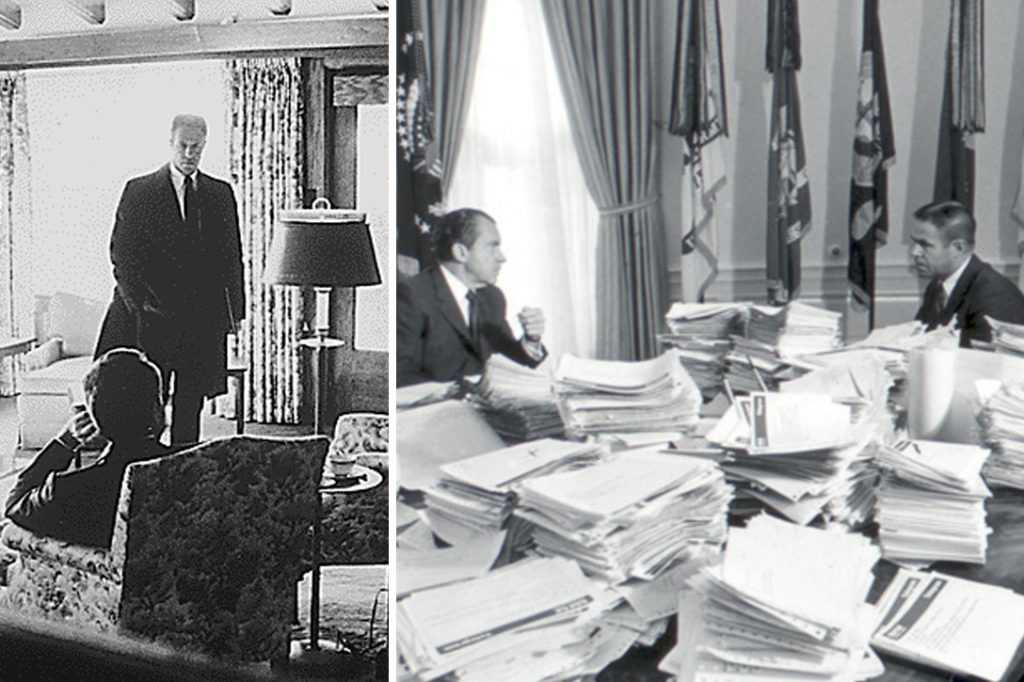
President Richard Nixon sitting before Chief of Staff H. R. Haldeman. Photograph of Nixon and Haldeman, surrounded by telegrams from people reacting to a speech. Photo credit: The White House / Wikimedia and The White House / Nixon Library
On June 23, Nixon’s chief of staff, H. R. “Bob” Haldeman, came into the Oval Office to give the president an update on a variety of topics, including the investigation of the break-in. Haldeman had just been briefed by John Dean, who had gotten his information from FBI investigators.
HALDEMAN: …The FBI agents who are working the case, at this point, feel that’s what it is. This is CIA….
Nixon’s response would show that he had already realized this:
NIXON: Of course, this is a, this is a [E. Howard] Hunt [operation, and exposure of it] will uncover a lot of things. You open that scab there’s a hell of a lot of things and that we just feel that it would be very detrimental to have this thing go any further. This involves these Cubans, Hunt, and a lot of hanky-panky that we have nothing to do with ourselves… This will open the whole Bay of Pigs thing…
Of course, it is important to remember that Nixon knew every word he uttered was being recorded. Like his predecessors Kennedy and Johnson, he had decided to install a taping system so that he could maintain a record of his administration. He was, in a way, dictating a file memo for future historians.
But that doesn’t make everything he said untrue. While Nixon undoubtedly spun some things, he still had to communicate with his subordinates, and the tape was rolling while he was trying to run the country. Those were actual meetings and real conversations, tape or no tape. And though the result was 3,700 hours of White House tape recordings, Nixon evinced merely sporadic consciousness of the fact that the tape was rolling. Only after his counsel John Dean defected to the prosecutors did Nixon appear to be tailoring his words.
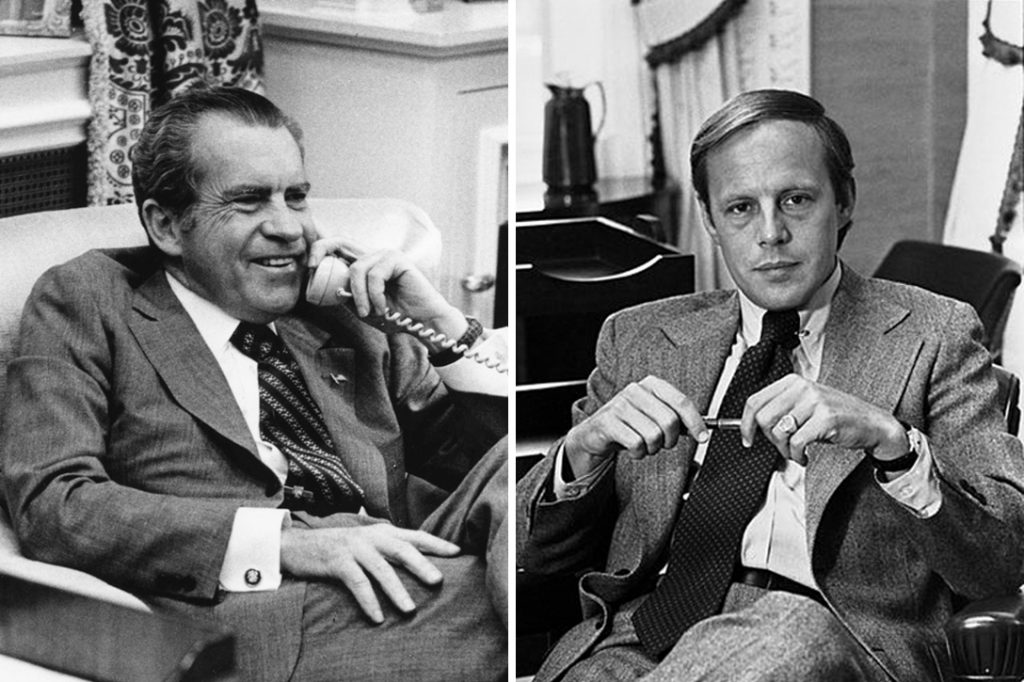
President Nixon working in his office at the Executive Office Building, January 17, 1974. John Dean photo portrait as White House Counsel. Photo credit: The White House / Wikimedia
Nixon’s memoirs, combined with the tape of June 23, make clear that Nixon recognized certain things about the implementation of the burglary.
The caper was carried out by pros, yet paradoxically was amateurish, easily detected — an instigation of the crime more easily pinned on someone else. A break-in at Democratic Party headquarters: On whom would that be blamed? Well, who was running against a Democrat for reelection that fall? Why, Richard Nixon of course.
Nixon, who frequently exhibited a grim and self-pitying awareness of how he generally was portrayed, might have grasped how this would play out publicly. Dick Nixon: ruthless, paranoid, vengeful — Tricky Dick. Wouldn’t this burglary be just the kind of thing that that Dick Nixon — the “liberal media’s” version of him — would do? Nixon’s opponent, George McGovern, made this charge repeatedly during the 1972 campaign.
Though Nixon would sweep the election, it would become increasingly apparent to him that, where Watergate was concerned, the jury was stacked. The path was set. Someone had him in a corner.
But who?
Many people, including those within Nixon’s own base of support, were not happy with him — even from early in his administration. As Haldeman noted in his diary, one month after the inauguration in 1969:
Also got cranking on the political problem. [President’s] obviously concerned about reports (especially Buchanan’s) that conservatives and the South are unhappy. Also he’s annoyed by constant right-wing bitching, with never a positive alternative. Ordered me to assemble a political group and really hit them to start defending us, including Buchanan… [and political specialist Harry] Dent.
There would be growing anger in the Pentagon about Nixon and Kissinger’s secret attempts to secure agreements with China and the Soviet Union without consulting the military. And there were the oilmen, who found Nixon wasn’t solid enough on their most basic concerns, such as the oil depletion allowance and oil import quotas.
As for the burglary crew, Nixon recognized them instantly, because he knew what they represented. While serving as vice president, Nixon had overseen some covert operations and served as the “action officer” for the planning of the Bay of Pigs, of which these men were hard-boiled veterans.
They had been out to overthrow Fidel Castro, and if possible, to kill him.
Nixon had another problem. These pros were connected to the CIA, and as we shall see, Nixon was not getting along well with the agency.
He had no way of knowing that, two years later, his conversation with Haldeman would be publicly revealed and construed as that of a man in control of a plot — rather than the target of one.
One of the main reasons we fundamentally misunderstand Watergate is that the guardians of the historical record focused only on selected parts of Nixon’s taped conversations, out of context. Consider a widely cited portion of a June 23 meeting tape, which would become known forever as the “smoking gun” conversation:
HALDEMAN: The way to handle this now is for us to have [CIA deputy director Vernon] Walters call [FBI interim director] Pat Gray and just say, “Stay the hell out of this… this is ah, business here we don’t want you to go any further on it.”
NIXON: Um hum.
Short excerpts like this seem especially damning. This one sounds right off the bat like a cover-up — Nixon using the CIA to suppress an FBI investigation into the break-in.
But these utterances take on a different meaning when considered with other, less publicized parts of the same conversation. A prime example: Haldeman went on to tell Nixon that Pat Gray, the acting FBI director, had called CIA director Richard Helms and said,
“I think we’ve run right into the middle of a CIA covert operation.”
Although the first excerpt above sounds like a discussion of a cover-up, when we consider the information about the CIA involvement, it begins to seem as if Nixon is not colluding.
He may well have been refusing to take the rap for something he had not authorized — and certainly not for something that smelled so blatantly like a trap. Nixon would have understood that if the FBI were to conduct a full investigation and conclude that the break-in was indeed an illegal operation of the CIA, it would all be blamed squarely on the man who supposedly had ultimate authority over both agencies — him.
And doubly so, since the burglars and their supervisors were tied not just to the CIA but also directly back to Nixon’s reelection committee and the White House itself.
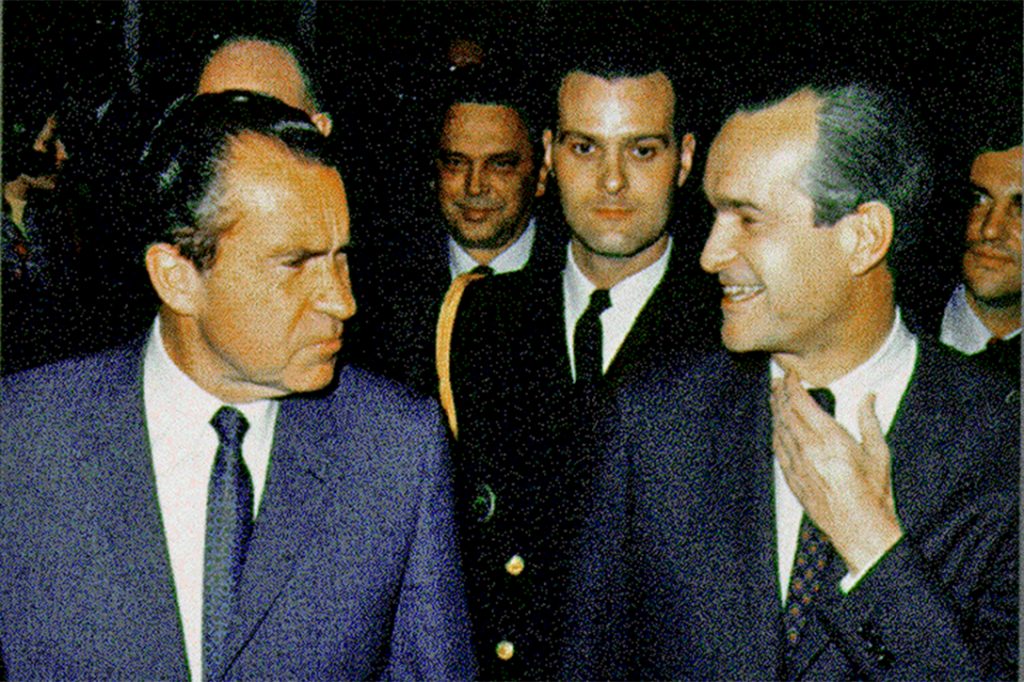
President Richard Nixon with CIA Director Richard Helms. Photo credit: CIA
Yet, however concerned Nixon certainly must have been at this moment, he played it cool. He concurred with the advice that his chief of staff was passing along from the counsel John Dean, which was to press the CIA to clean up its own mess.
If the CIA was involved, then the agency would have to ask the FBI to back off. The CIA itself would have to invoke its perennial escape clause — say that national security was at stake. This must have sounded to Nixon like the best way to deal with a vexing and shadowy situation.
He had no way of knowing that, two years later, his conversation with Haldeman would be publicly revealed and construed as that of a man in control of a plot — rather than the target of one.
Sniffing Around the Bay of Pigs
.
How could Nixon have so quickly gotten a fix on the Watergate crew? He might have recognized that the involvement of this particular group of Cubans, together with E. Howard Hunt — and the evidence tying them back to the White House — was in part a message to him. One of the group leaders, G. Gordon Liddy, would even refer to the team as a bunch of “professional killers.”
Indeed, several of this Bay of Pigs circle had gone to Vietnam to participate in the assassination-oriented Phoenix Program; as noted in chapter 7, Poppy Bush and his colleague, CIA operative Thomas Devine, had been in Vietnam at the peak of Phoenix, and Bush had ties to at least some from this émigré group.
So Nixon recognized this tough gang, but this time, they weren’t focused on Fidel Castro — they were focused on Dick Nixon.
Hunt was a familiar figure from the CIA old guard. A near contemporary of Poppy Bush’s, but at Brown, Hunt had, as noted in earlier chapters, gone on to star in numerous agency foreign coup operations, including in Guatemala. He had worked closely with Cuban émigrés and had been in sensitive positions at the time John F. Kennedy was murdered and Lee Harvey Oswald named the lone assassin. Moreover, Hunt had been a staunch loyalist of Allen Dulles, whom Kennedy had ousted over the failed Bay of Pigs invasion; he allegedly even collaborated on Dulles’s 1963 book, The Craft of Intelligence.
Hunt was one connected fellow, and his presence in an operation of this sort, particularly with veterans of the Cuba invasion, was not something to pass over lightly. Nixon had further basis for viewing the events of Watergate with special trepidation. From the moment he entered office until the day, five and a half years later, when he was forced to resign, Nixon and the CIA had been at war. Over what? Over records dating back to the Kennedy administration and even earlier.
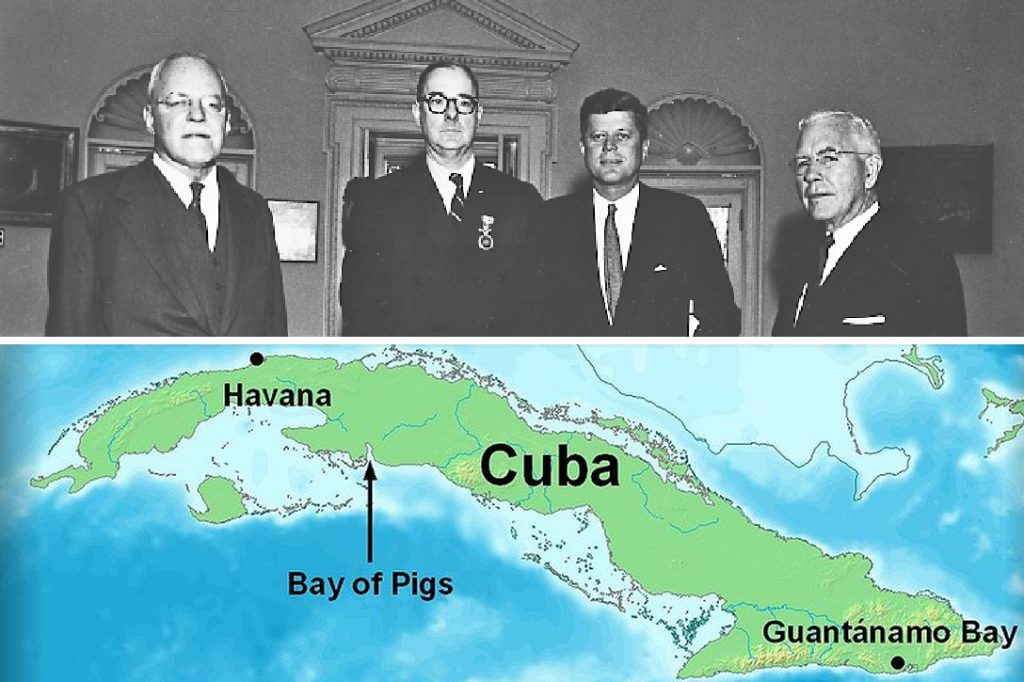
Left to right: Allen Dulles, Richard Bissell, President Kennedy and John McCone, April 1962. Map of Cuba Photo credit: CIA and Zleitzen / Wikimedia
Nixon had many reasons to be interested in the events of the early 1960s. As noted, he had been the “action officer” for the planning of the Bay of Pigs and the attempt to overthrow Castro. But even more interestingly, Nixon had, by coincidence, been in Dallas on November 22, 1963, and had left the city just hours before the man he barely lost to in 1960 had been gunned down.
Five years after the Kennedy assassination, as Richard Nixon himself assumed the presidency, one of his first and keenest instincts was to try to learn more about these monumental events of the past decade.
Both of Nixon’s chief aides, Bob Haldeman and John Ehrlichman, noted in their memoirs that the president seemed obsessed with what he called the “Bay of Pigs thing.” Both were convinced that when Nixon used the phrase, it was shorthand for something bigger and more disturbing.
Nixon did not tell even those closest to him what he meant.
When Nixon referred to the Bay of Pigs, he could certainly have been using it as a euphemism, because any way one thought about it, it spelled trouble. The Bay of Pigs invasion itself had been a kind of setup of another president.
JFK had made clear that he would not allow U.S. military forces to be used against Castro. When the invasion by U.S.-backed Cuban exiles failed, the CIA and the U.S. military hoped this would force Kennedy to launch an all-out invasion. Instead, he balked, and blamed Dulles and his associates for the botched enterprise, and, to their astonishment, forced them out of the agency. As noted in chapter 4, these were the roots of the hatred felt by Hunt, Dulles, and the Bush family toward Kennedy.
Nixon was keenly aware that Kennedy’s battle with powerful internal elements had preceded JFK’s demise. After all, governments everywhere have historically faced the reality that the apparatus of state security might have the chief of state in its gun sights — and that it certainly possesses the ability to act.
Moreover, Richard Nixon was a curious fellow. Within days of taking office in 1969, Nixon had begun conducting an investigation of his own regarding the turbulent and little-understood days leading up to the end of the Kennedy administration. He had ordered Ehrlichman, the White House counsel, to instruct CIA director Helms to hand over the relevant files, which surely amounted to thousands and thousands of documents. Six months later, Ehrlichman confided to Haldeman that the agency had failed to produce any of the files.
“Those bastards in Langley are holding back something,” a frustrated Ehrlichman told Haldeman. “They just dig their heels in and say the President can’t have it. Period. Imagine that. The Commander-in-Chief wants to see a document and the spooks say he can’t have it . . . From the way they’re protecting it, it must be pure dynamite.”
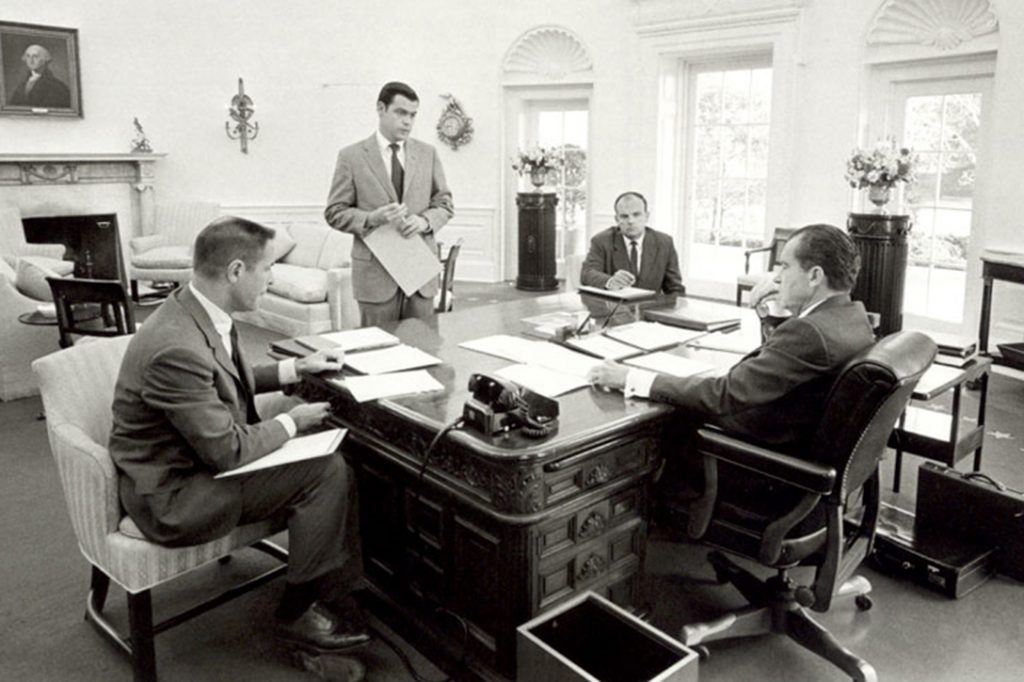
President Richard Nixon confers with assistants H. R. Haldeman, Dwight Chapin, and John D. Ehrlichman, March 13, 1970. Photo credit: The White House / National Archives
Nixon himself then summoned Helms, who also refused to help. Helms would later recall that Nixon “asked me for some information about the Bay of Pigs and I think about the Diem episode in Vietnam and maybe something about Trujillo in the Dominican Republic” — all events involving the violent removal of foreign heads of state.
Fidel Castro had managed to survive not only the Bay of Pigs but also multiple later assassination attempts. Diem and Trujillo were not so fortunate. And President Kennedy, who made a lot of Cuban enemies after the botched Bay of Pigs operations, had also succumbed to an assassin’s bullet. This was a legacy that might well seize the attention of one of Kennedy’s successors.
The explosiveness of the mysterious “Bay of Pigs thing” became abundantly apparent on June 23, 1972, the day Nixon instructed Haldeman to tell CIA director Helms to rein in the FBI’s Watergate investigation. Recalled Haldeman:
Then I played Nixon’s trump card. “The President asked me to tell you this entire affair may be connected to the Bay of Pigs, and if it opens up, the Bay of Pigs might be blown . . .”
Turmoil in the room, Helms gripping the arms of his chair, leaning forward and shouting, “The Bay of Pigs had nothing to do with this. I have no concern about the Bay of Pigs.” . . . I was absolutely shocked by Helms’ violent reaction. Again I wondered,what was such dynamite in the Bay of Pigs story?
Nixon made clear to his top aides that he was not only obsessed with the CIA’s murky past, but also its present. He seemed downright paranoid about the agency, periodically suggesting to his aides that covert operatives lurked everywhere. And indeed, as we shall see, they did.
In all likelihood, the practice of filling the White House with intelligence operatives was not limited to the Nixon administration, but an ongoing effort.
To the intelligence community, the White House was no different than other civil institutions it actively penetrated. Presidents were viewed less as elected leaders to be served than as temporary occupants to be closely monitored, subtly guided, and where necessary, given a shove.
If the CIA was in fact trying to implicate Nixon in Watergate (and, as we shall see, in other illegal and troubling covert operations), the goal might have been to create the impression that the agency was joined at the hip with Nixon in all things. Then, if Nixon were to pursue the CIA’s possible role in the assassination of Kennedy, the agency could simply claim that Nixon himself knew about these illegal acts, or was somehow complicit in them.
Related front page panorama photo credit: Adapted by WhoWhatWhy from Watergate (Indutiomarus / Wikimedia) and Richard Nixon (The White House / Nixon Library)
